

"India is the cradle of human race, the birthplace of human speech and the mother of history, legend and tradition. Our most valuable and most astrictive materials in the history of man are treasured up in India! "
Mark Twain.
At present there are 28 States in india The history says
The Indus valley civilization saw its genesis in the holy land now known as India around 2500 BC. The people inhabiting the Indus River valley were thought to be Dravidians, whose descendants later migrated to the south of India. The deterioration of this civilization that developed a culture based on commerce and sustained by agricultural trade can be attributed to ecological changes. The second millennium BC was witness to the migration of the bucolic Aryan tribes from the North West frontier into the sub continent. These tribes gradually merged with their antecedent cultures to give birth to a new milieu.
The Aryan tribes soon started penetrating the east, flourishing along the Ganga and Yamuna Rivers. By 500 BC, the whole of northern India was a civilized land where people had knowledge of iron implements and worked as labor, voluntarily or otherwise. The early political map of India comprised of copious independent states with fluid boundaries, with increasing population and abundance of wealth fueling disputes over these boundaries.
Unified under the famous Gupta Dynasty, the north of India touched the skies as far as administration and the Hindu religion were concerned. Little wonder then, that it is considered to be India’s golden age. By 600 BC, approximately sixteen dynasties ruled the north Indian plains spanning the modern day Afghanistan to Bangladesh. Some of the most powerful of them were the dynasties ruling the kingdoms of Magadha, Kosla, Kuru and Gandhara.
Known to be the land of epics and legends, two of the world’s greatest epics find their birth in Indian settings - the Ramayana, depicting the exploits of lord Ram, and the Mahabharta detailing the war between Kauravas and Pandavas, both descendants of King Bharat. Ramayana traces lord Ram’s journey from exile to the rescue of his wife Sita from the demonic clutches of Ravana with the help of his simian companions. Singing the virtues of Dharma(duty), the Gita, one of the most priced scriptures in Indian Mythology, is the advice given by Shri Krishna to the grief laden Arjun, who is terrified at the thought of killing his kin, on the battle ground.
Mahatma Gandhi revived these virtues again, breathing new life in them, during India’s freedom struggle against British Colonialism. An ardent believer in communal harmony, he dreamt of a land where all religions would be the threads to form a rich social fabric.
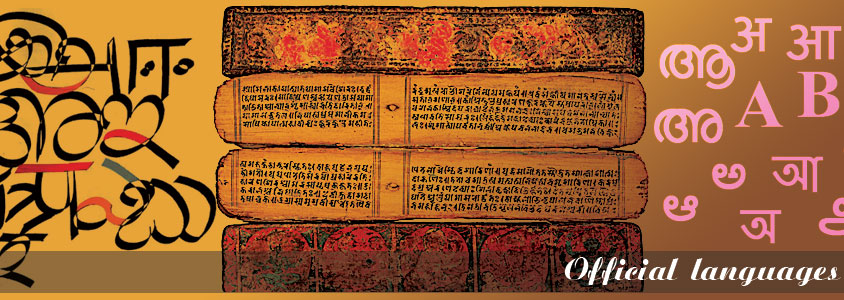
The official languages of the Republic of India are Standard Hindi (41% of the country speaks Standard Hindi or another Hindi dialect) and English. According to the article 343 (1) of the Constitution of India, "The Official Language of the Union shall be Hindi in Devanagari script."[22] The individual states can legislate their own official languages, depending on their linguistic demographics. For example, the state of Karnataka has Kannada as its sole official language, the state of Maharashtra has Marathi as its sole official language, the state of Punjab has Punjabi as its sole official language, the state of Odisha has Oriya as its sole official language, the state of Tamil Nadu has Tamil as its sole official language, the state of Kerala has Malayalam as its sole official language, while the state of Jammu and Kashmir has Kashmiri, Urdu, and Dogri as its official languages.
Classical Languages
In 2004, the Government of India declared that languages that met certain requirements could be accorded the status of a "Classical Language in India".[29] Languages thus far declared to be Classical are Tamil (in 2004),[30] Sanskrit (in 2005),[31] Kannada, Telugu (in 2008),[32] and Malayalam (in 2013).
Language |
State(s) |
|
Indo-Aryan, Central |
Jammu and Kashmir, Andhra Pradesh, Delhi, Bihar, Uttar Pradesh and Uttarakhand |
|
Dravidian |
||
Dravidian |
||
Indo-Aryan, Northwestern |
non-regional |
|
Munda |
Santhal tribals of the Chota Nagpur Plateau (comprising the states of Bihar, Chattisgarh, Jharkhand, Odisha) |
|
Indo-Aryan |
non-regional |
|
Indo-Aryan, Northwestern |
||
Indo-Aryan, Eastern |
||
Indo-Aryan, Northern |
||
Indo-Aryan, Southern |
Maharashtra, Goa, Dadra & Nagar Haveli, Daman and Diu, Madhya Pradesh |
|
Manipuri (also Meitei or Meithei) |
Tibeto-Burman |
|
Dravidian |
Kerala, Andaman and Nicobar Islands, Lakshadweep, Puducherry |
|
Indo-Aryan, Eastern |
||
Indo-Aryan, Southern |
||
Indo-Aryan, Dardic |
||
Dravidian |
||
Indo-Aryan, Central |
Andaman and Nicobar Islands, Arunachal Pradesh, Bihar, Chandigarh, Chhattisgarh, the national capital territory of Delhi, Haryana, Himachal Pradesh, Jharkhand, Madhya Pradesh, Rajasthan, Uttar Pradesh and Uttarakhand |
|
Indo-Aryan, Western |
||
Indo-Aryan, Northwestern |
||
Tibeto-Burman |
||
Indo-Aryan, Eastern |
||
Indo-Aryan, Eastern |
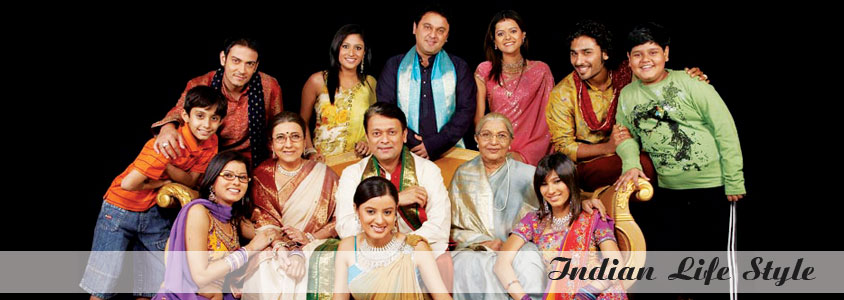
Punjabi, Marathi, Bihari, Bengali, Assamese, Nepali, Gujrati, Kashmiri ,tamilian…. Though India consists of diverse ethnic races and groups and each of them strictly adhere to their own set of customs and tradition, yet there is a common lifestyle pattern followed by almost all the Indians. This, despite the fact that there is so much variation in their language, dressing style and custom! Read on to know about the life of people in the country and what traits put them together under the brand 'India':
Joint Family System
A majority of the people in India prefer to live in a joint family, which could comprise anywhere between a group of two or more members to even over 20 members sometimes. As per the Indian way of living, the commanding position in a family is held by the eldest earning male member. He consults other adult members on important issues, but it is his decision that ultimately prevails. However, a lot of importance is also given to the advice of the eldest retired members of the family.
Womens are hardworker than men
As per the lifestyle of the Indian people, it is the duty of a woman to take care of her home. As such, from her very childhood, a girl child is taught to rustle up mouth-watering dishes by her mother and other ladies in her family. She is also taught to attend to guests and strangers politely and elegantly because it is thought to greatly reflect upon her upbringing. Hers is a 24x7 job, yet she manages to execute it smoothly and is respected for this quality.
Worshipping
Worshipping is an important part of the daily life of Indian people. You will find the holy basil tulsi planted in maximum houses, which people water as well as worship everyday religiously. Many Indians are associated to various religious sects and attend weekly gatherings to listen to the sermons. Apart from temples, mosques and gurdwaras, there will also invariably be a personal place for worship, and pictures of Gods and Goddesses, in every house in India.
Ways of respecting elders
One common trait you will find amongst Indians is that children show utmost respect to their elders. Now this is one habit all Indian parents deliberately inculcate in their children, since beginning. It is an unsaid rule in India that a person cannot answer back to elders and more so, when he/she is at fault. It is deemed disrespectful in India to refer to an elder by his / her name. Instead people prefer calling them uncle and aunt, especially if the person is very elderly. It is also customary in India for the youngsters to touch the feet of their elders as a way of greeting as well as on important occasions.
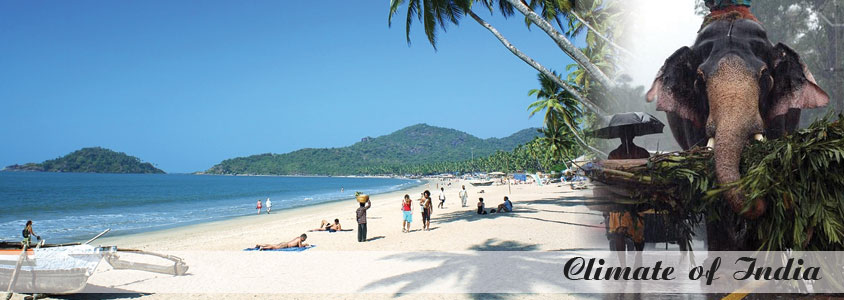
Indian weather and climate conditions are very diverse and can reach extremes. The climate of India is essentially a temperate one. India lies to the north of Equator, so the southern part of India is usually much warmer than the rest of India. Also, water bodies flank India on three sides thus giving the peninsular region a maritime climate. The weather of India changes every now and then thus giving the people the much-needed relief from the extreme weather conditions. Check out the main seasons of India and decide when is the best time for your visit.
Summer Season
The duration of summer in India is from March to June. It is mildly pleasant in March, a bit uncomfortable in April, hot in May and scorching in June. The temperature in the plains of northern India can go upto 45o Celsius. The southern region is equally hot. This is the time when people pack their bags and head off to the hills and valleys where it is relatively cooler.
Monsoons
The Monsoon season in India usually lasts from the month of June to that of September. During this time, most of the areas in the country get their share of rainfall, which leaves a hue of greenery in its wake. The South West Monsoon enters India through the coast of Kerala and Andaman & Nicobar Islands and passing through Mumbai, central India and eastern India, reaches other parts of North and N West India. During the months of October to November, some parts of South India experience rains in the form of the northeast monsoon.
Winter Season
The winters in India can get really chilly. It becomes bone chilling during the months of November to February. The northern part of India experiences harsh weather conditions with cold wave sweeping almost entire northern regions and central parts of India. The hilly areas experience sub-zero temperature conditions.
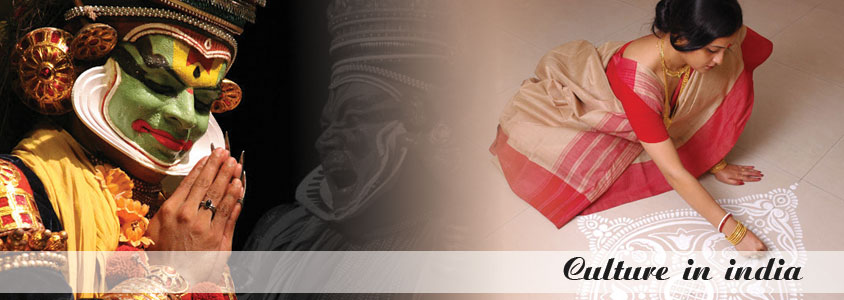
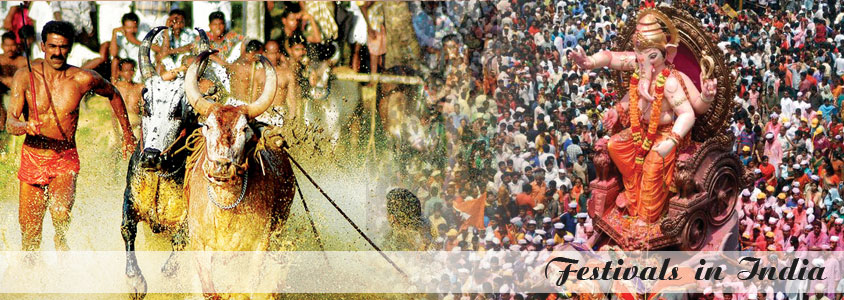
It Calls for Celebrations
The 'Land of Gods' never needs a particular reason to celebrate. Celebration is a fundamental part of every Indian's life. From January to December, every month comes with a particular fair or festival. Makar Sakranti, Basanti Panchami, Holi, Ram Navami, Janamashtami, Diwali, Eid, Mahavir Jayanti, Buddha Purnima, Guru Purv and Christmas; the festival of every religion has a significance and it is celebrated in a boisterous way.
Here people don't need a floor to dance. Celebrations on streets during Durga Puja, Ganesh Chathurthi, Janamashtmi and Holi show the real dancing talents of Indians.
Not only this, the country is famous everywhere for the handicrafts melas and fairs that it organizes during particular intervals. Surajkund Craft Mela that is held every year in February in Haryana attracts a large chunk of masses and foreign tourists. In such fairs and festivals, you can find the real India. Such theme melas and festivals unite the whole nation. People come to know about each other's cultures and traditions and their active participation shows how much they love to know about each other.
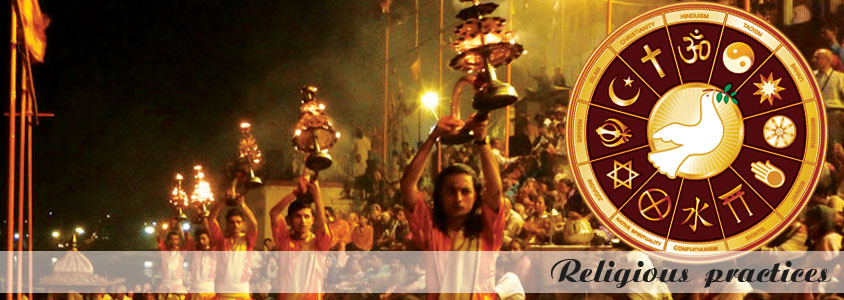
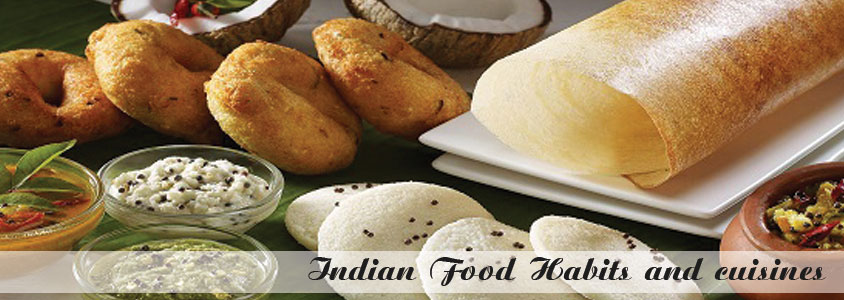
It Doesn't Have Just One
Number of religions, number of states and thus number of cuisines. If north India has chole bhature, tanduri chicken, rajma chawal, kadi chawal, dhokla, daal baati churma and biryani to relish, then our south India is not behind in the race. From masala dosa, rava uttpam, rasam, sambar-lemon rice to toran, appam, meen; the south Indian cuisine has a great variety to offer.
The concept of Thali is very famous in India. A thali is served in a very traditional form and in this you can enjoy the complete variety available in a particular cuisine. In small restaurants thali is the cheapest way of getting your mouth full. If you have stepped in to a hotel, then you can enjoy the variety in the form of combo meals.
The variety in Indian peppers like black pepper, coriander seeds, and tamarind, cardamom, saffron and cumin seeds not only enhance the flavor of the food but also add nutritive value to it. The Indian food is incomplete if you don't get something sweet in the end. Have a bowl full of kheer or a little mitha paan to add sweetness and freshness to your mouth.
Despite so many diversities, people in India are united and they feel proud of their culture and tradition. On the world stage, either through international film festivals or through beauty pageants, India displays regularly its talent and culture. Many rulers came but none could bring harm to its culture rather Indians preserved the good values of their cultures too. The flexibility and movement with time make Indian Culture fashionable and acceptable too.

Indian Dresses
Beauty of Indian women lies in the clothes she wears. Very traditional and ethnic yet contemporary Indian Saris are famous worldwide. It is worn with a blouse that covers the upper part of the body. In rural parts a version of sari, called ghagara -choli is very much popular. Choli is like a short blouse that covers the upper part of the body and ghagara is like a long skirt. In order to have a graceful and complete look, women folk carry a duppatta, which is a soft and delicate material of reasonable length thrown over the shoulder.
Though with slight variations, Salwar kameez is a dress that is famous in every part of India. This attire contains two pieces-kameez, which is a like a long top covering upper part of the body and salwar is like trousers. Like ghagara choli, salwar kameez is also complemented by dupatta.
For the men, there is no dearth of variety. From dhoti kurta to shirt pants, an Indian man prefers everything that fits well and looks good. But, traditionally you can see north Indians wearing kurta pajama, dhoti kurta or sherwani on formal celebrations whereas south Indian men prefer lungi with shirt.
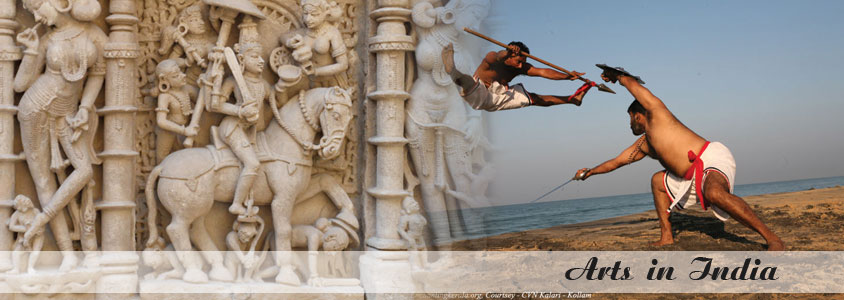
Everything is Artistic here!
Nowhere in the world you can find such a great variety in performing and visual arts that you can find in India. >From a roadside show to a highly sophisticated drama in the theatre, you can find anything and everything here.
Indian art can be categorized into two main categories- performing arts and visual arts.
Performing Arts
Dance, drama, theatre or music, every art is unique in itself. In India, religions, mythology and classical literature form the basis of most of the performing arts.
Indian classical dances like Bharatnatyam, Kathakali, Kathak, Manipuri, Odissi and Kuchipudi mainly follow the codes of natya shastra, mythology and classical literature and epics like Ramayana and Mahabharta.
Another kind of performing art is theatre. Though the folk theatre prevails in each and every language and region, the professional theatre is popular only in big urban areas or metropolitan cities. Uniqueness of Indian theatre is the puppet show. For centuries, Puppet shows have been popular in creating awareness about social issues in masses and inculcating the moral values of truth and honesty in the kids.
For Indians, music is to the soul what food is to the body. Since Vedic period it's been capturing the heart and mind of every Indian. In the classical Indian music, there are basically two types of schools- the Hindustani Music (North) and the Carnatic Music (South). 'Raga' arrangement of musical notes is the key in the classical music. The Indian villages also have their special kind of music that carries colors of folk tradition. Music of Indian movies is also liked by the masses.
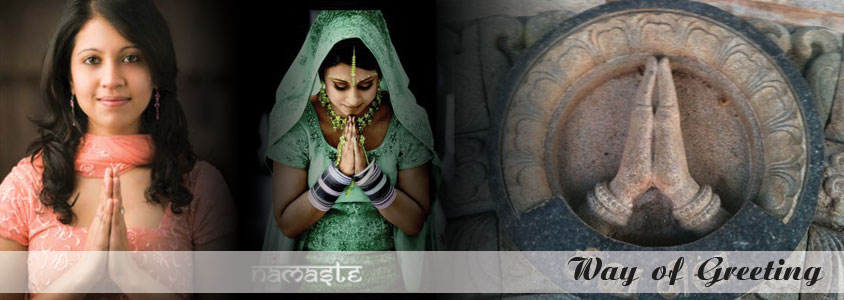
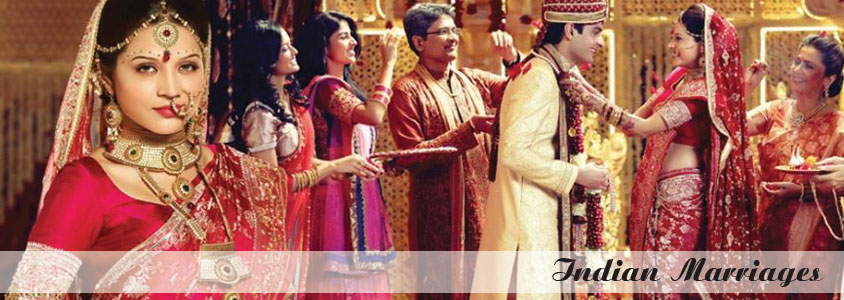
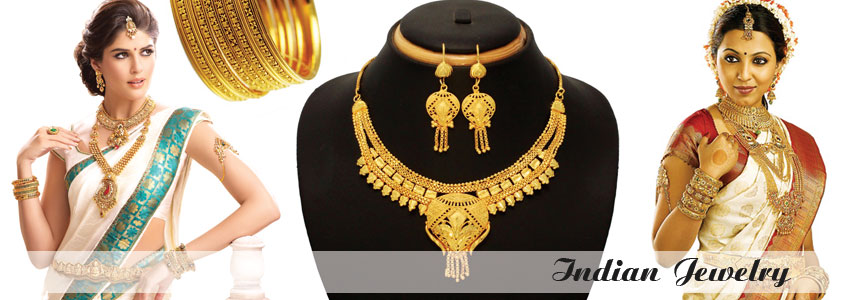
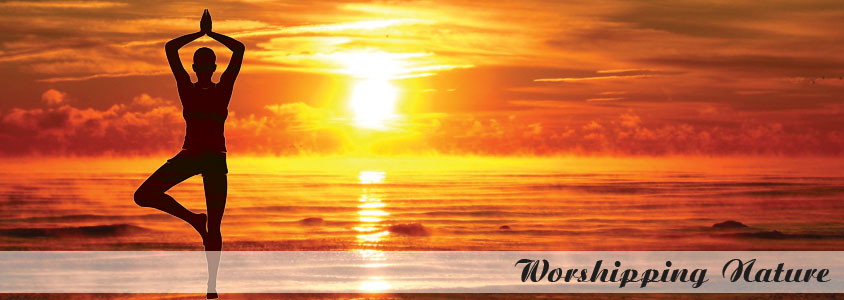
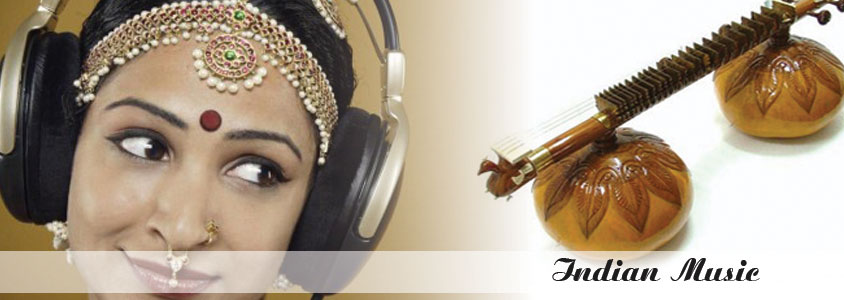
The music of India includes multiple varieties of folk, popular, pop, classical music and R&B. India's classical music tradition, including Carnatic and Hindustani music, has a history spanning millennia and developed over several eras. Music in India began as an integral part of socio-religious life and that Indian music is essentially melodic: sounds follow one another expressing an emotional state in an aesthetic unity.
Two main traditions of classical music are Carnatic music, found predominantly in the peninsular regions, and Hindustani music, found in the northern and central regions.[2] The basic concepts of this music includes Shruti, Swara, Alankar, Rāga, and Tāla. Its tonal system divides the octave into 22 segments called shrutis, not all equal but each roughly equal to one quarter of a whole tone of Western music. Melody is based on the system of ragas, which are melody types used as the basis for improvisation.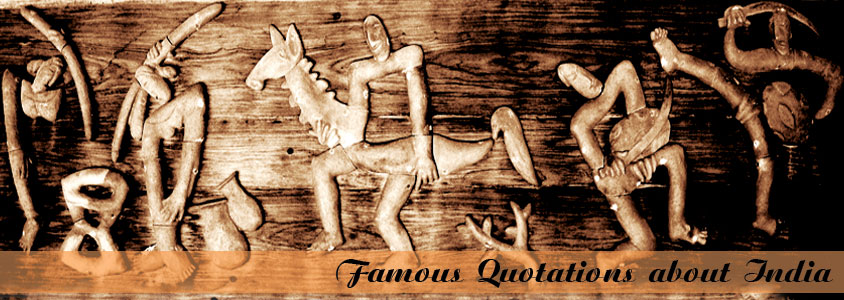
Pan India Tourism
Unit of - AABYO SWACH YATRA HOSPITALITY PVT. LTD
Phone: 044-43595695
Cell: +91-75 300 25 888,
+91-9789930293, +91-9789080806, +91-9746125967
email: info@panindiatourism.com
